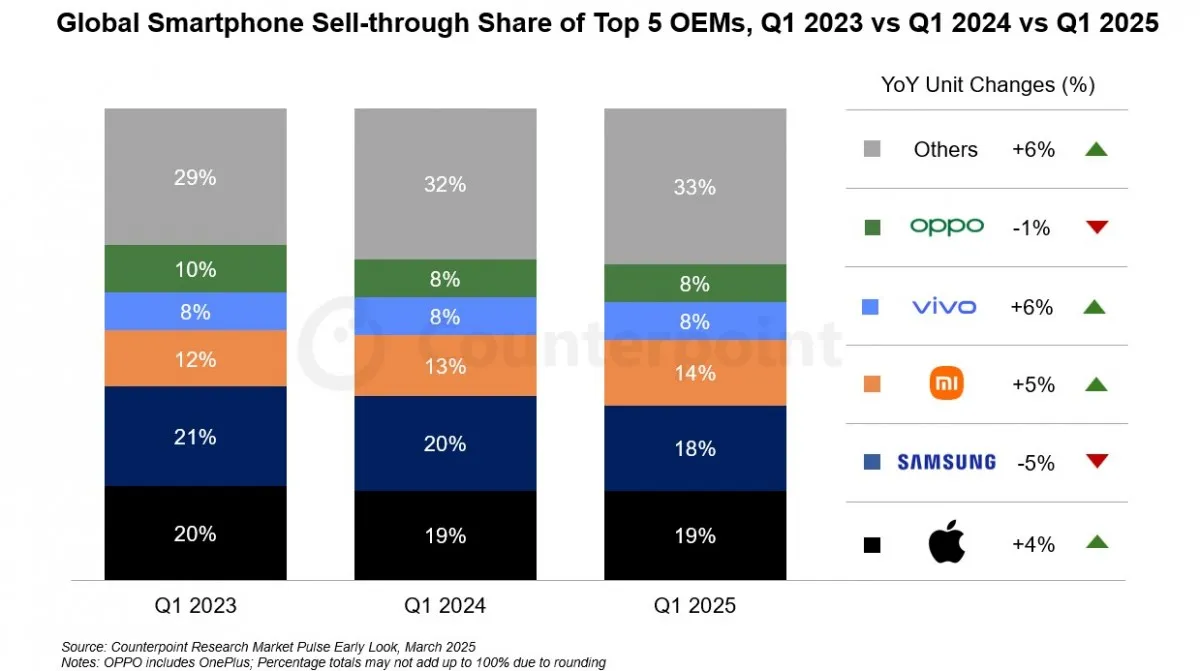Apple became the world’s largest smartphone vendor in Q1 2025

Apple has become the largest smartphone vendor in the world in Q1 2025 – for the first time in its history. This is according to a fresh report from analyst firm Counterpoint Research. Despite stagnant or even declining sales in the brand’s traditional markets – the U.S., China and Europe – the company saw impressive growth in other regions, including Japan, India, the Middle East, Africa and Southeast Asia.
According to analysts, Apple captured 19% of the global market between January and March, increasing shipments by 4% year-on-year. The main driver was the launch of the iPhone 16e, a model aimed at a broader audience.
Samsung came in second with an 18% share, but the South Korean giant’s shipments were down 5% year-on-year. That said, March was a good month, with the launch of the Galaxy S25 series helping the company post double-digit growth in the final weeks of the quarter. The flagship Galaxy S25 Ultra performed particularly well, with its share of the lineup up from last year’s counterpart.

The third spot went to Xiaomi, which controls 14% of the global market. The Chinese company also grew volumes by 5%, helped by both its domestic market and expansion into new territories.
Vivo was among the fastest-growing brands, with its shipments up 6% year-over-year. The company shared fourth place with Oppo, both with 8% of the market, although Oppo saw a slight decline in volumes. Nevertheless, the brand continued to expand in India, Latin America and Europe.
In China, the top-selling brand in the first quarter was Huawei. Honor and Motorola also saw strong growth, but not enough to move into the top 5 of the global ranking.
As a whole, the global smartphone market added 3% in terms of shipments in the first quarter of 2025. However, Counterpoint Research predicts that the segment may show a slight decline year-over-year compared to 2024, primarily due to economic and trade factors, including new tariffs in the U.S.








